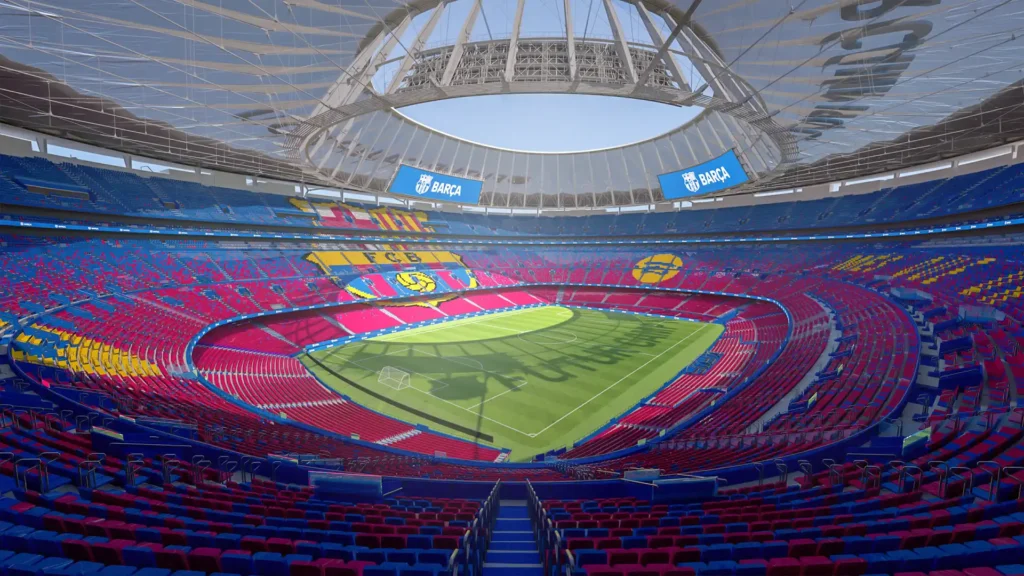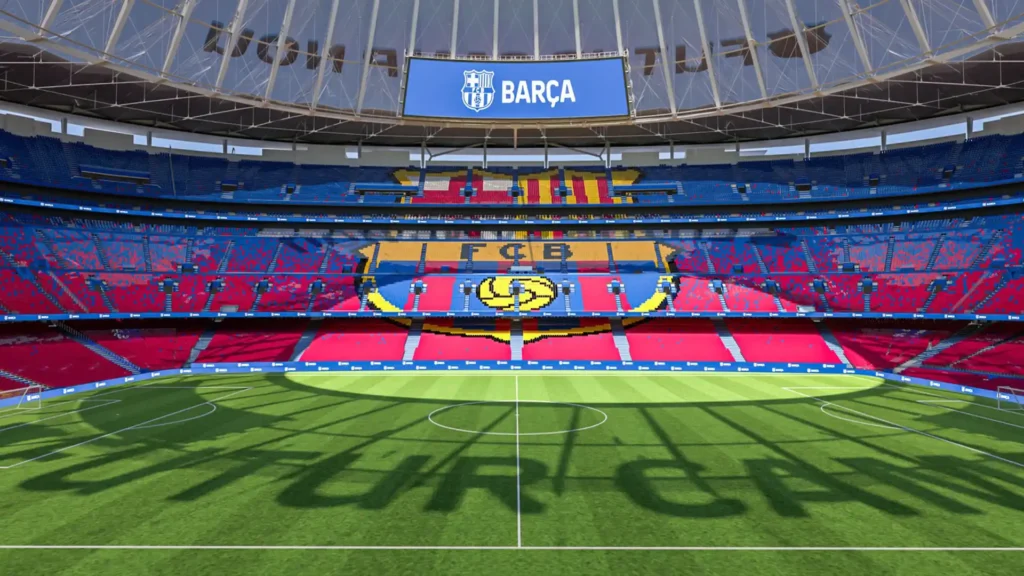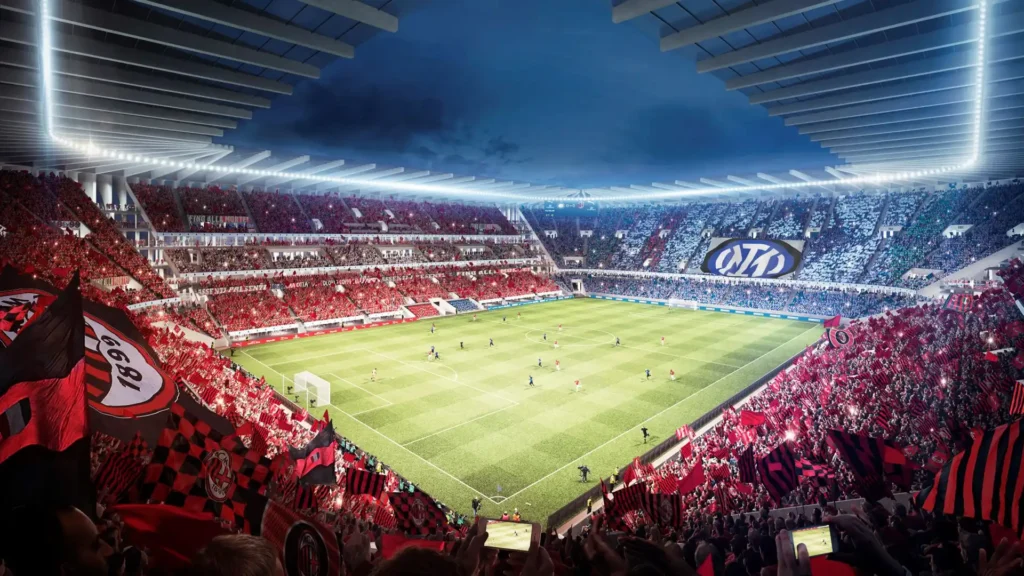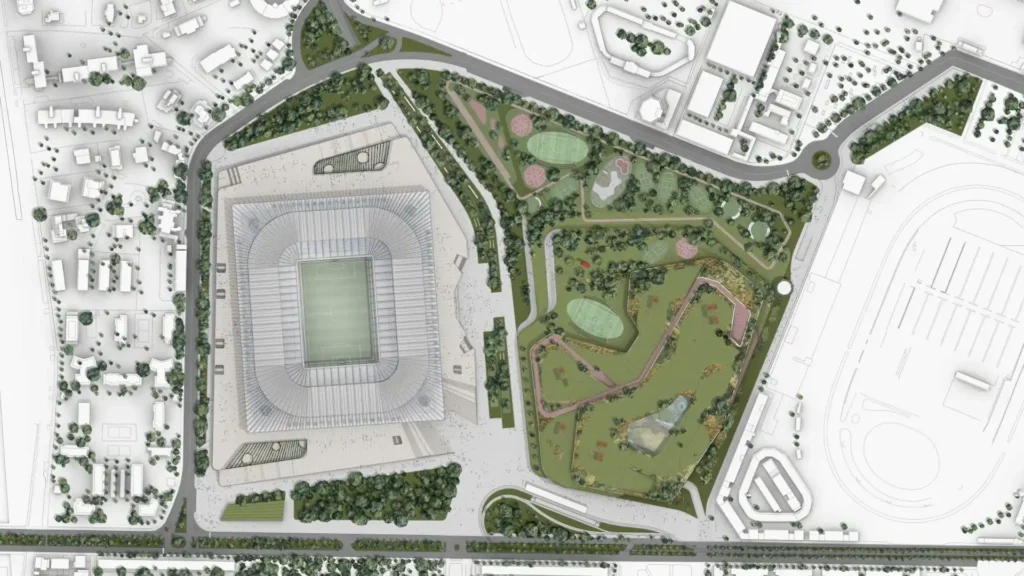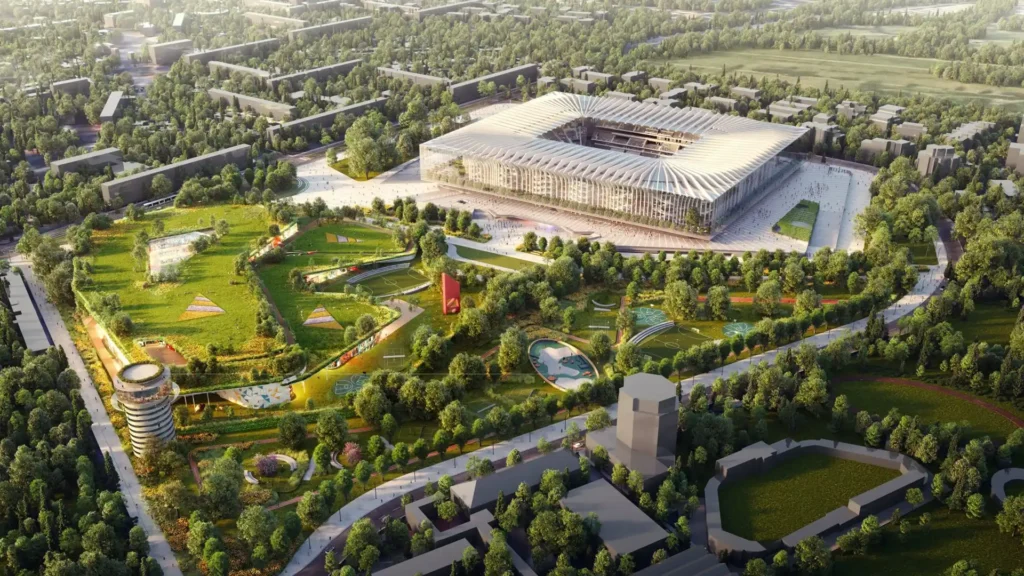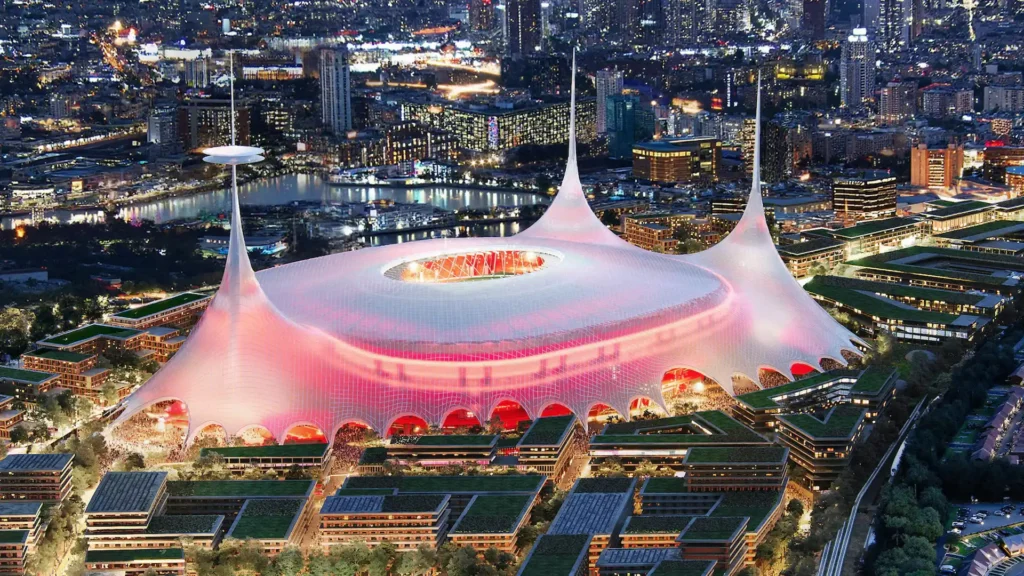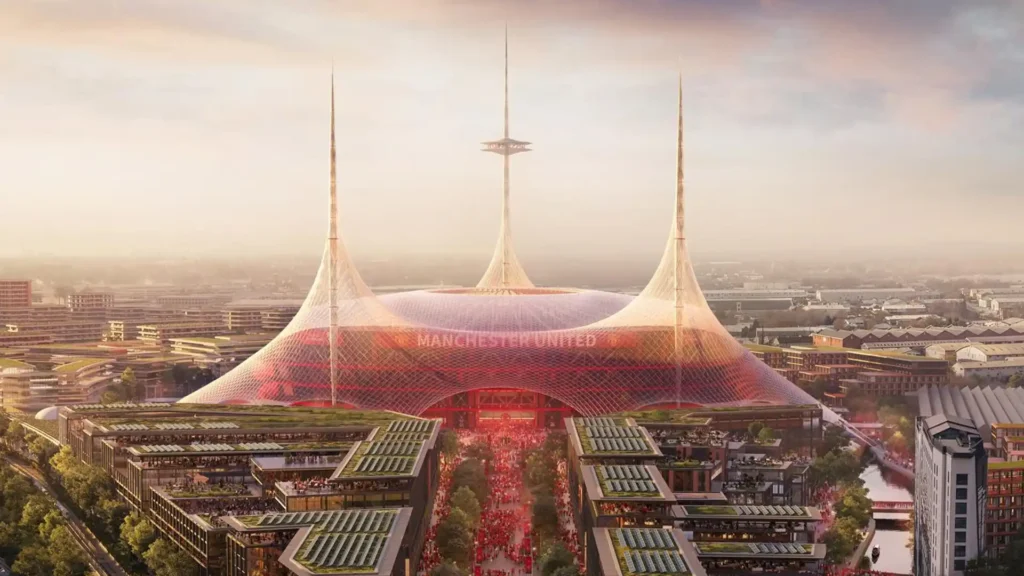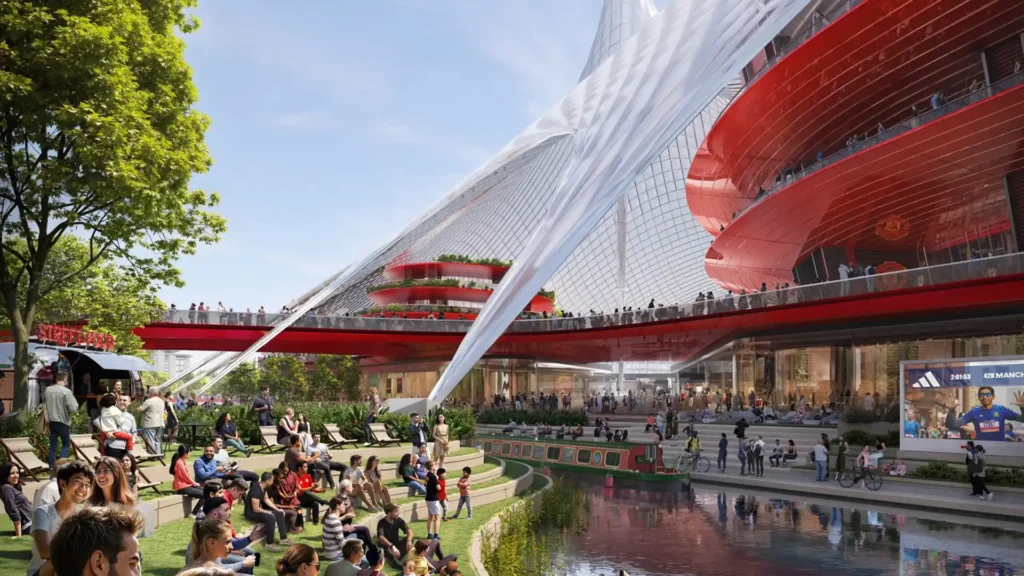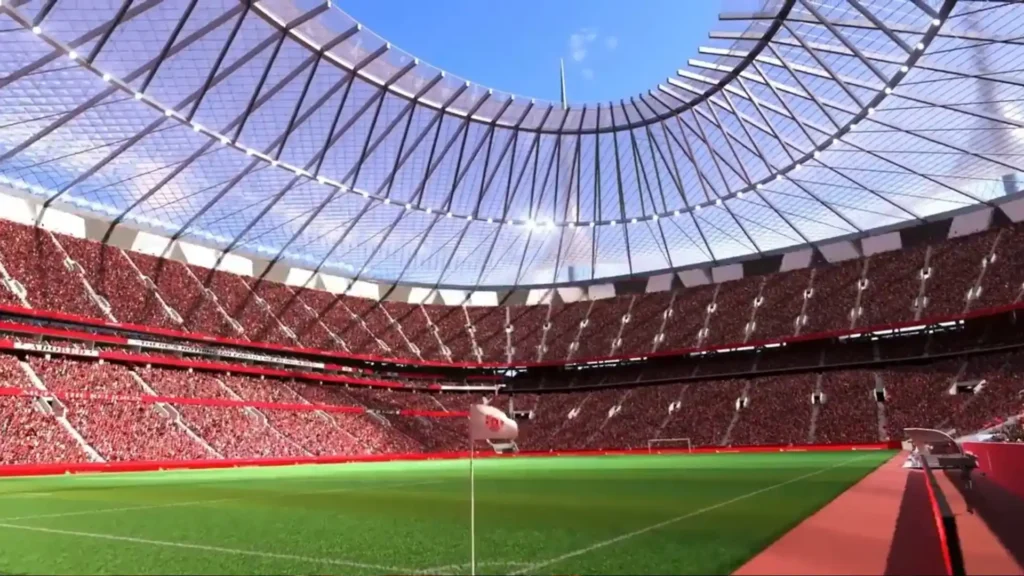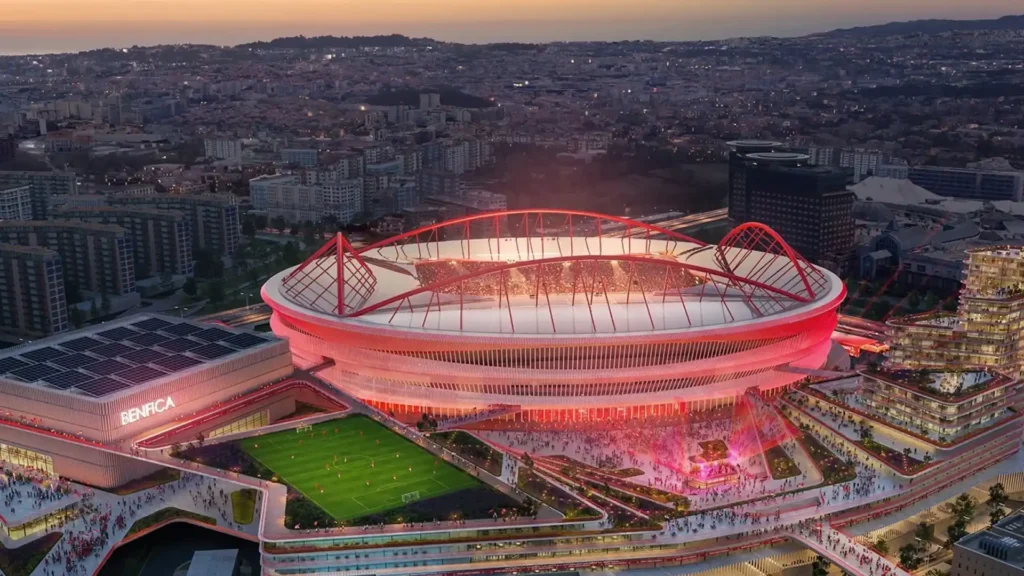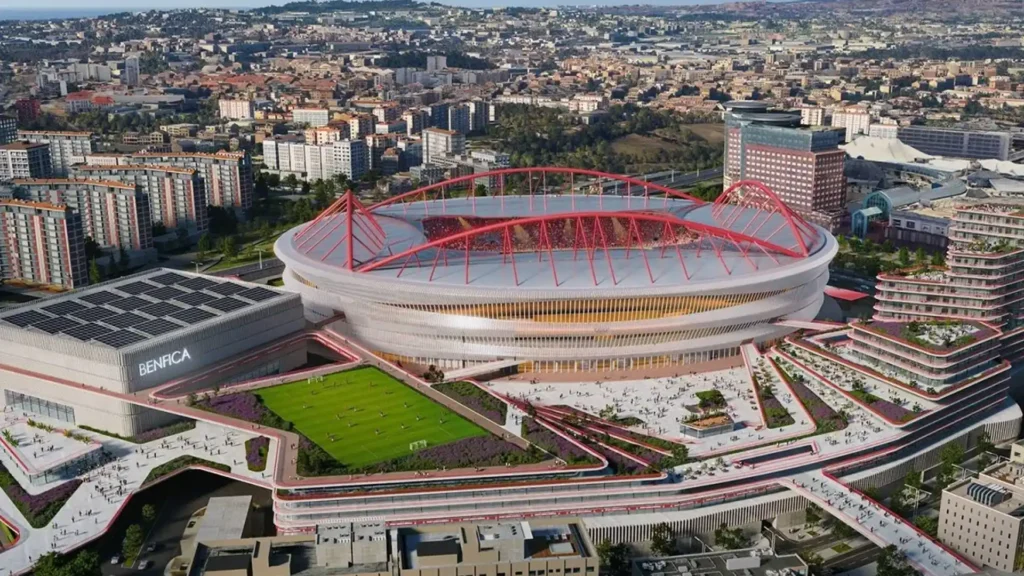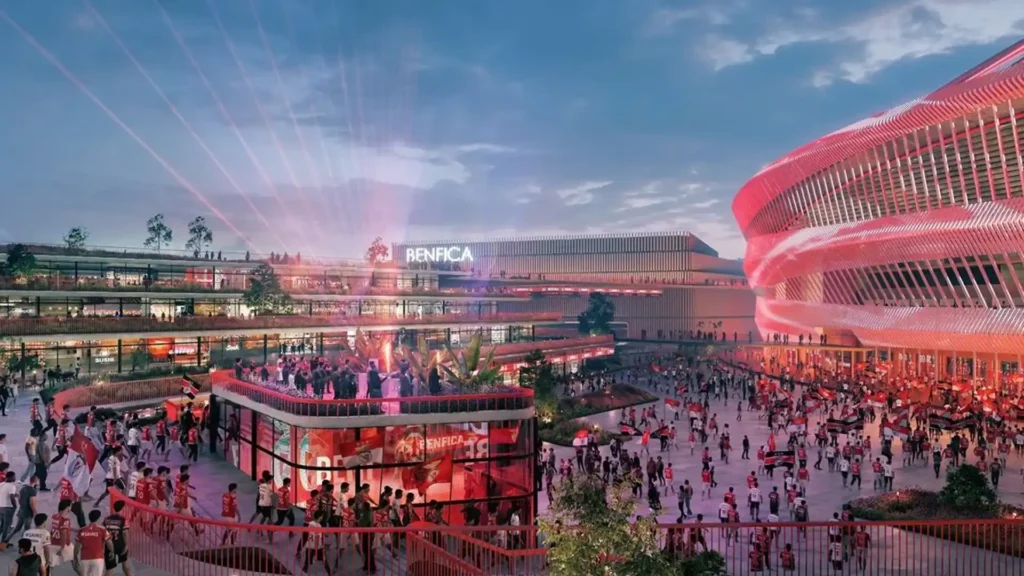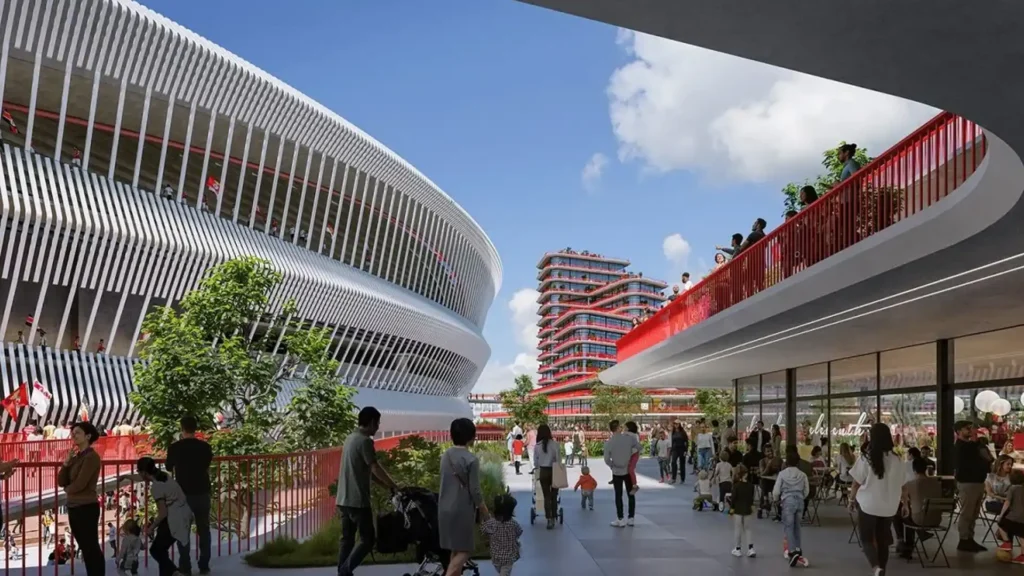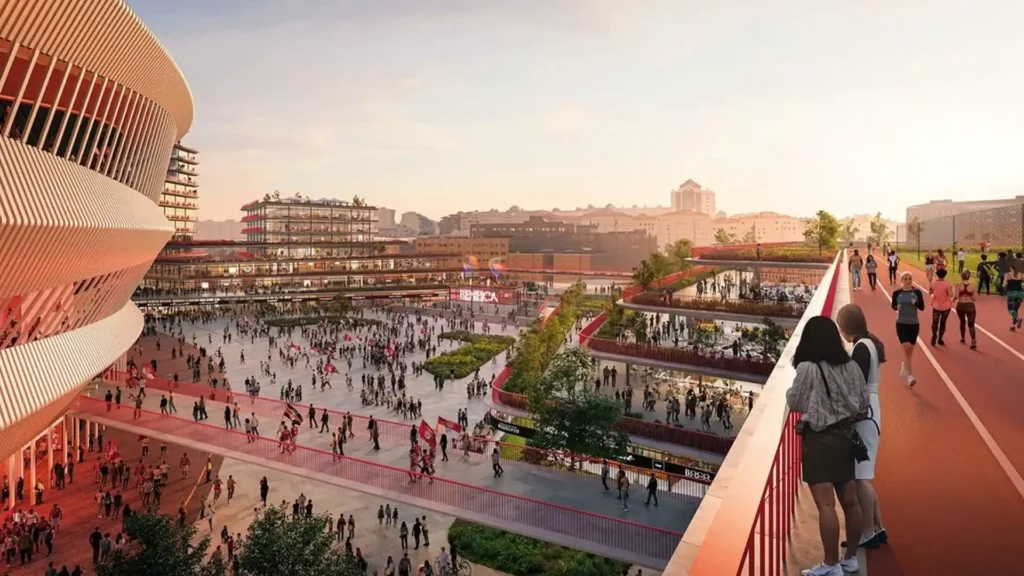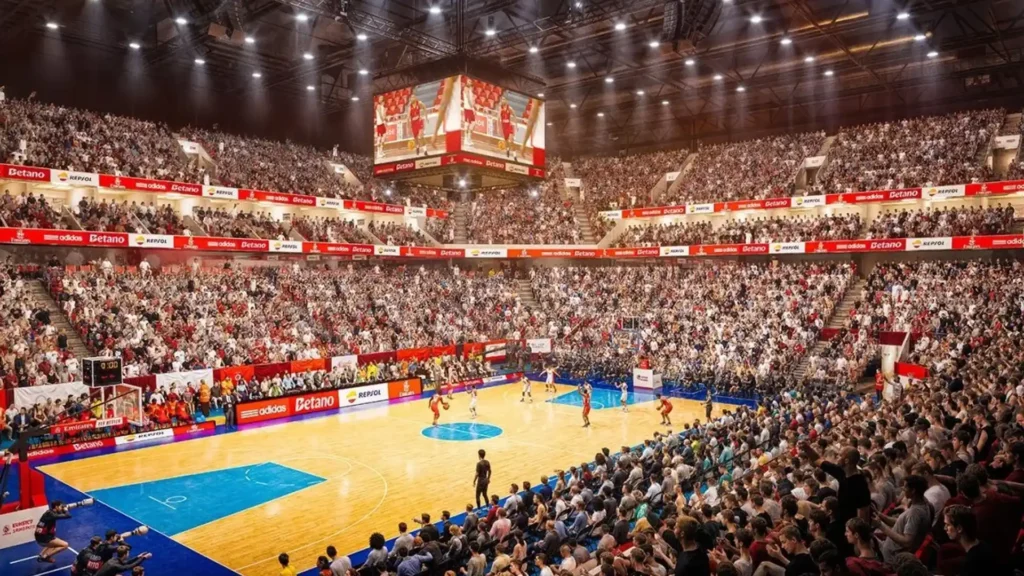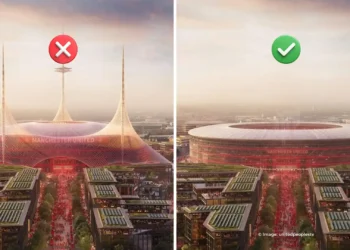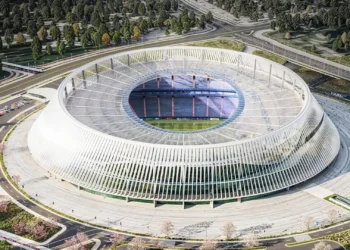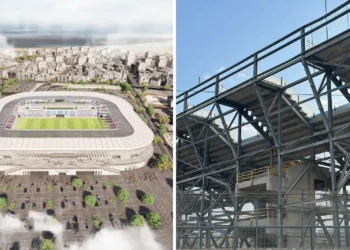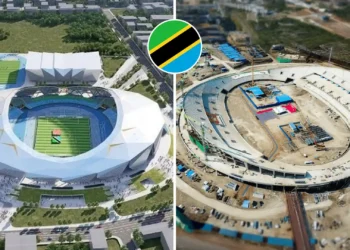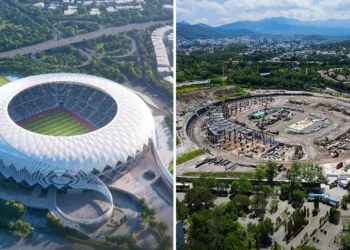By 2030, some of football’s most iconic clubs will be playing in venues that look dramatically different from what we know today. Driven by the need to meet modern UEFA standards, enhance fan experiences, and boost revenue streams, clubs are investing billions into cutting-edge stadiums and redevelopments. From historic renovations to brand-new architectural marvels, the football landscape is about to change forever. Here’s a club-by-club look at what the future holds.
1. Barcelona – Renovated Camp Nou
The legendary Camp Nou is undergoing a monumental transformation under the Espai Barça project. Renovations began in June 2023 and are set for full completion by mid-2026. The revamped stadium will boast a capacity of approximately 105,000, making it the largest in Europe. With upgraded facilities, modern hospitality areas, and sustainable features, it is also expected to be one of the flagship venues for the 2030 FIFA World Cup.
2. AC Milan & Inter Milan – A Brand-New Joint Stadium
Milan’s two football giants are preparing to replace the iconic but aging San Siro. A submitted feasibility study outlines a 71,500-seat stadium designed to meet all modern UEFA criteria. The plans feature a “sports citadel” concept with green spaces, museums, retail outlets, hotels, and an urban plaza. Completion is targeted for 2031, with parts of the complex operational by 2030.
3. Manchester United – “Wembley North”
Old Trafford, despite its history, is nearing the end of its functional life. The club has finalised designs for a 100,000-seat ultra-modern stadium just metres from the current ground. While no construction start date has been announced, the ambition is to have Manchester United playing in their new home by 2030.
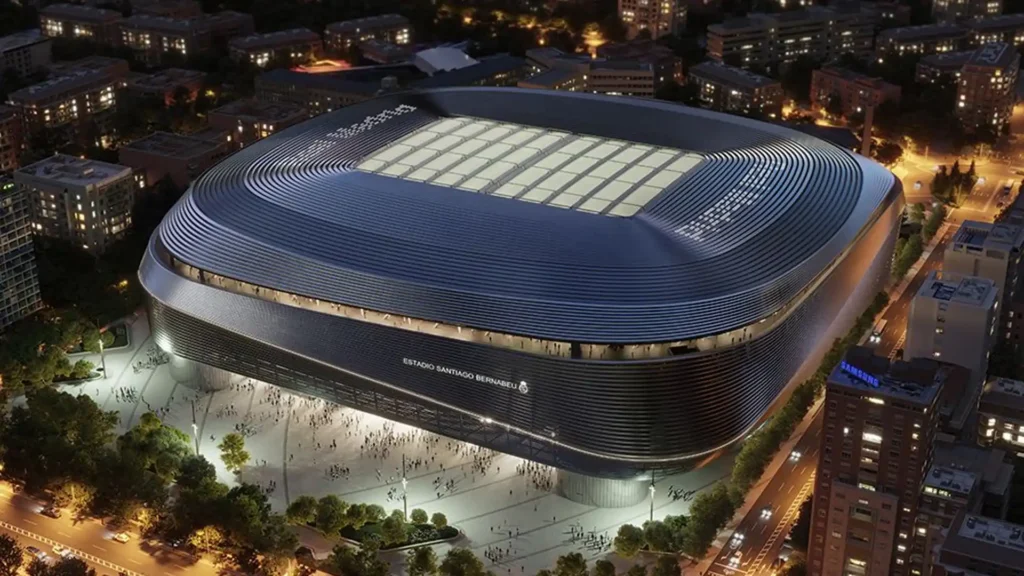
4. Real Madrid – Bernabeu Facade Upgrades
Fresh from their extensive Santiago Bernabéu overhaul—which included new seating, a 360-degree screen, retractable roof, and removable pitch—Real Madrid are turning their attention to the exterior. Planned LED facade enhancements will give the stadium a futuristic glow while resolving weather-related issues and creating new advertising revenue opportunities.
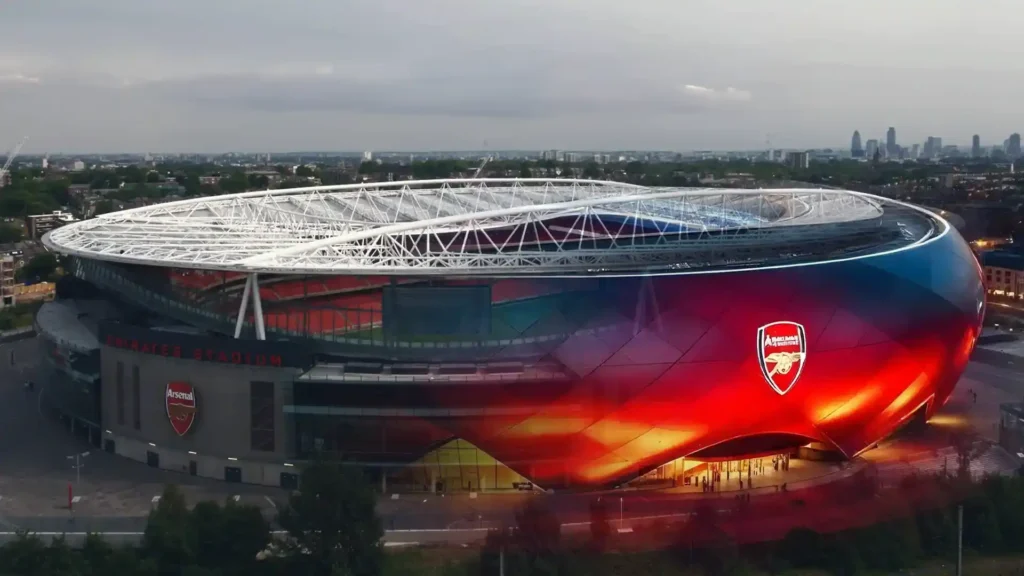
5. Arsenal – Expanded Emirates Stadium
The Emirates Stadium, though relatively new, is set for a capacity boost alongside VIP facilities and expanded commercial zones. The club aims to create a venue that’s open and profitable seven days a week, enhancing competitiveness with rivals and generating consistent income.
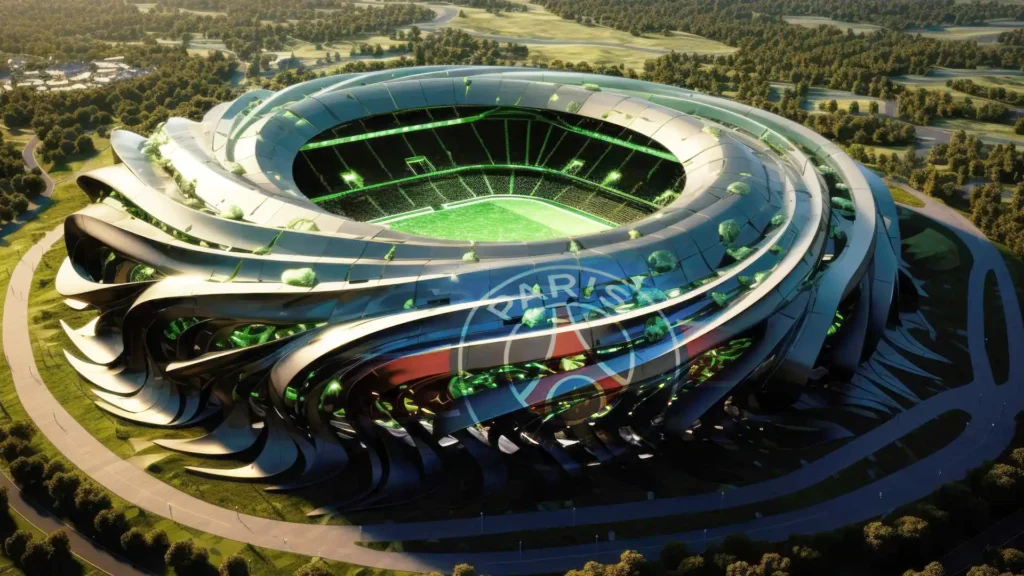
6. Paris Saint-Germain – New 90,000-Seat Stadium
PSG’s inability to expand the Parc des Princes due to lease restrictions has pushed the club toward building a brand-new stadium. The proposed 90,000-seat facility, likely to be located in Massy or Poissy, would be the largest stadium in France. If approved, construction could see it ready by the turn of the decade.
7. Benfica – Complete Redevelopment of Estádio da Luz
Benfica’s ambitious masterplan includes a redesigned LED-lit facade, a new 10,000-seat indoor arena, two modern sports halls, a community swimming pool, a rooftop theatre and football pitch, and a fan square for 10,000 people with restaurants and entertainment. Commercial and residential developments are also planned, with completion expected before the 2030 World Cup.

8. Boca Juniors – New 100,000-Seat Stadium
With La Bombonera aging, Boca Juniors have long dreamed of an ultra-modern 100,000-seat stadium. Financial backing remains the main obstacle, but with the right investment, the project could be completed by 2030, ushering in a new era for the Argentine giants.
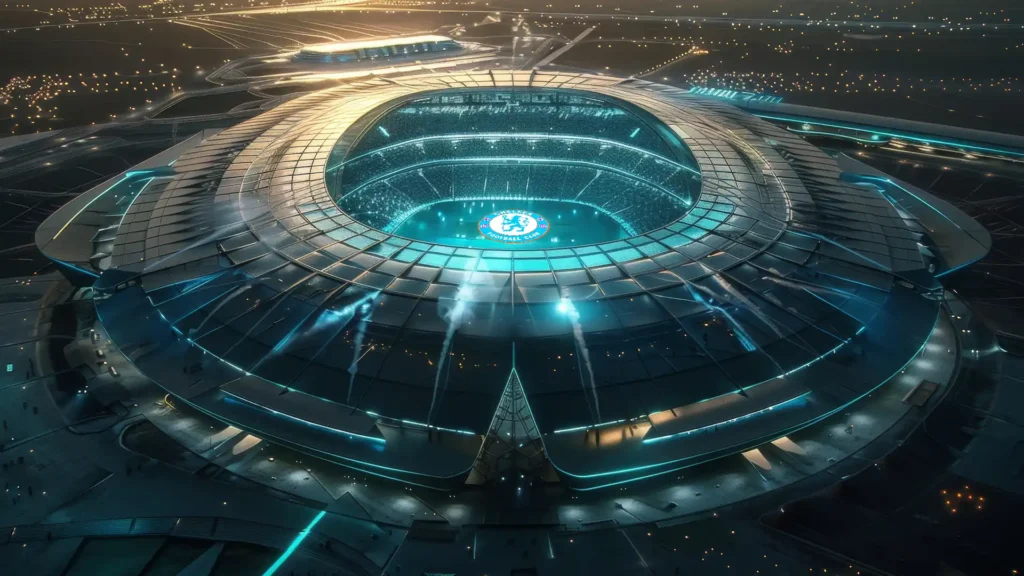
9. Chelsea – Large Modern Stadium
Chelsea face a crucial decision: redeveloping Stamford Bridge to 55–60,000 seats—a costly and complex endeavour—or relocating to a new site, with Earl’s Court emerging as the prime candidate. The proposed new venue could exceed 80,000 seats, giving Chelsea one of Europe’s largest club stadiums. With strong financial capacity, bureaucracy remains the main hurdle, but the likelihood of completion before 2030 is high.



